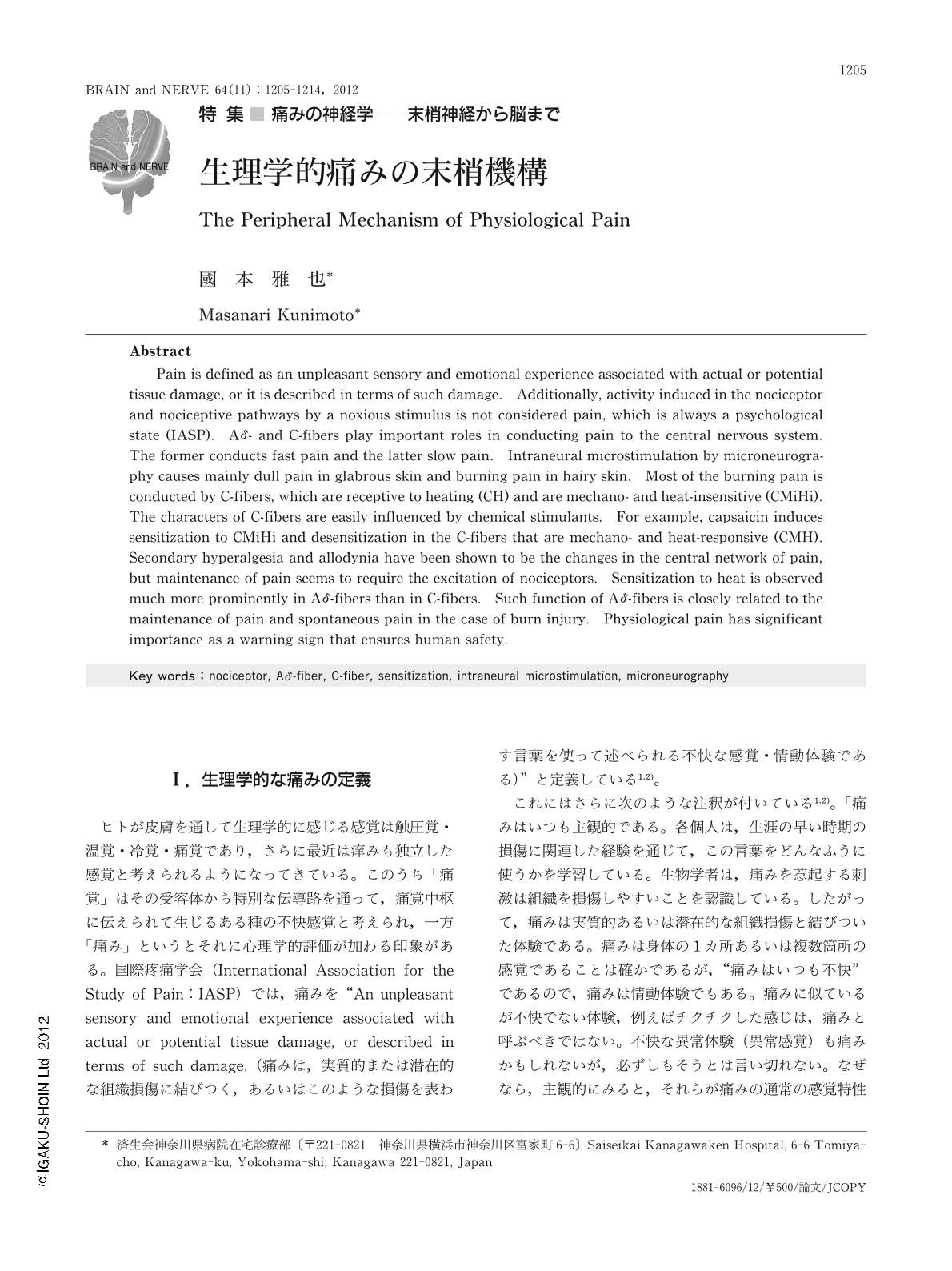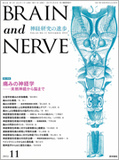Japanese
English
- 有料閲覧
- Abstract 文献概要
- 1ページ目 Look Inside
- 参考文献 Reference
Ⅰ.生理学的な痛みの定義
ヒトが皮膚を通して生理学的に感じる感覚は触圧覚・温覚・冷覚・痛覚であり,さらに最近は痒みも独立した感覚と考えられるようになってきている。このうち「痛覚」はその受容体から特別な伝導路を通って,痛覚中枢に伝えられて生じるある種の不快感覚と考えられ,一方「痛み」というとそれに心理学的評価が加わる印象がある。国際疼痛学会(International Association for the Study of Pain:IASP)では,痛みを“An unpleasant sensory and emotional experience associated with actual or potential tissue damage, or described in terms of such damage.(痛みは,実質的または潜在的な組織損傷に結びつく,あるいはこのような損傷を表わす言葉を使って述べられる不快な感覚・情動体験である)”と定義している1,2)。
これにはさらに次のような注釈が付いている1,2)。「痛みはいつも主観的である。各個人は,生涯の早い時期の損傷に関連した経験を通じて,この言葉をどんなふうに使うかを学習している。生物学者は,痛みを惹起する刺激は組織を損傷しやすいことを認識している。したがって,痛みは実質的あるいは潜在的な組織損傷と結びついた体験である。痛みは身体の1カ所あるいは複数箇所の感覚であることは確かであるが,“痛みはいつも不快”であるので,痛みは情動体験でもある。痛みに似ているが不快でない体験,例えばチクチクした感じは,痛みと呼ぶべきではない。不快な異常体験(異常感覚)も痛みかもしれないが,必ずしもそうとは言い切れない。なぜなら,主観的にみると,それらが痛みの通常の感覚特性を持たないかもしれないからである。多くの人々は,組織損傷あるいは,それに相応した病態生理学的原因がないのに痛みがあるという。普通,これは心理学的な理由で起こる。主観的な報告から,このような経験と組織損傷による経験とを通常区別できるものではない。もし彼らが,自分の体験を痛みと思い,組織損傷によって生じる痛みと同じように報告するなら,それを痛みと受け入れるべきである。この定義は,痛みを刺激に結びつけることを避けている。侵害刺激によって,侵害受容器および侵害受容経路に引き起こされる活動が痛みであるのではなく,痛みはたいていの場合主因が身体にあることを受け入れるにしても,痛みはいつも心理学的な状態である。」
Abstract
Pain is defined as an unpleasant sensory and emotional experience associated with actual or potential tissue damage, or it is described in terms of such damage. Additionally, activity induced in the nociceptor and nociceptive pathways by a noxious stimulus is not considered pain, which is always a psychological state (IASP). Aδ- and C-fibers play important roles in conducting pain to the central nervous system. The former conducts fast pain and the latter slow pain. Intraneural microstimulation by microneurography causes mainly dull pain in glabrous skin and burning pain in hairy skin. Most of the burning pain is conducted by C-fibers, which are receptive to heating (CH) and are mechano- and heat-insensitive (CMiHi). The characters of C-fibers are easily influenced by chemical stimulants. For example, capsaicin induces sensitization to CMiHi and desensitization in the C-fibers that are mechano- and heat-responsive (CMH). Secondary hyperalgesia and allodynia have been shown to be the changes in the central network of pain, but maintenance of pain seems to require the excitation of nociceptors. Sensitization to heat is observed much more prominently in Aδ-fibers than in C-fibers. Such function of Aδ-fibers is closely related to the maintenance of pain and spontaneous pain in the case of burn injury. Physiological pain has significant importance as a warning sign that ensures human safety.

Copyright © 2012, Igaku-Shoin Ltd. All rights reserved.


